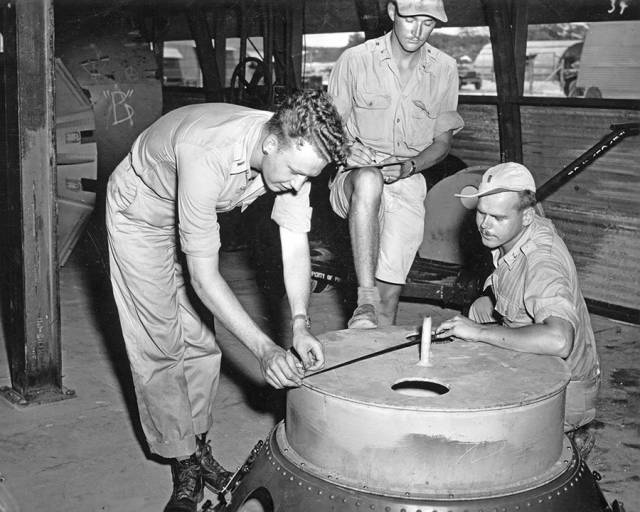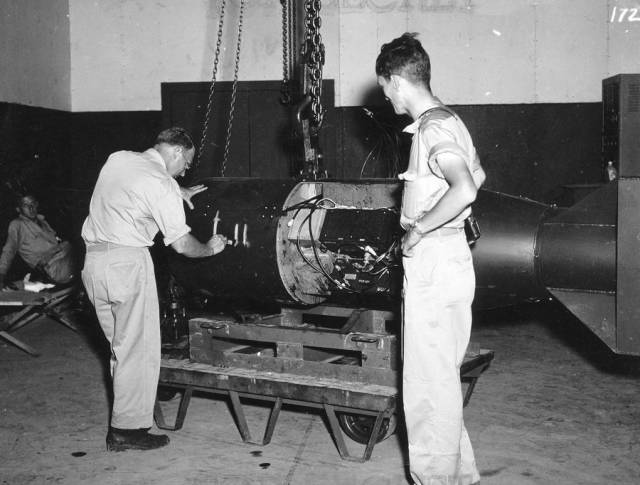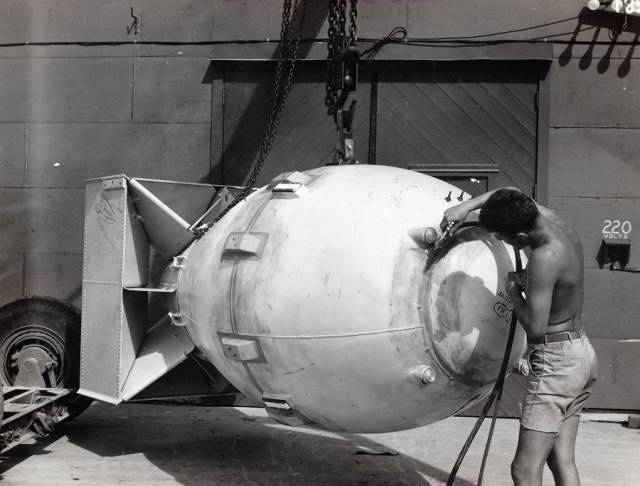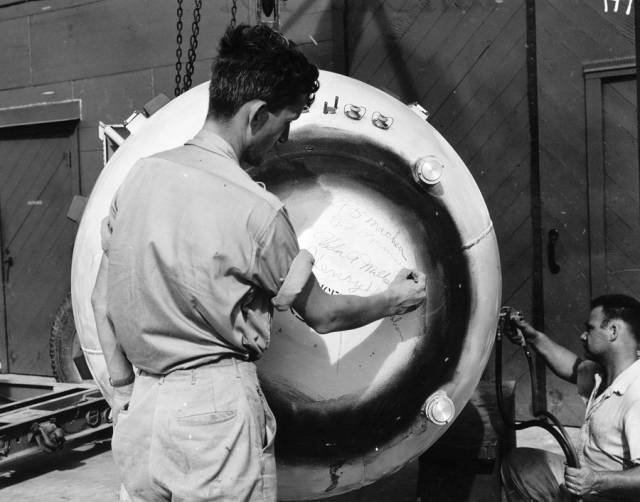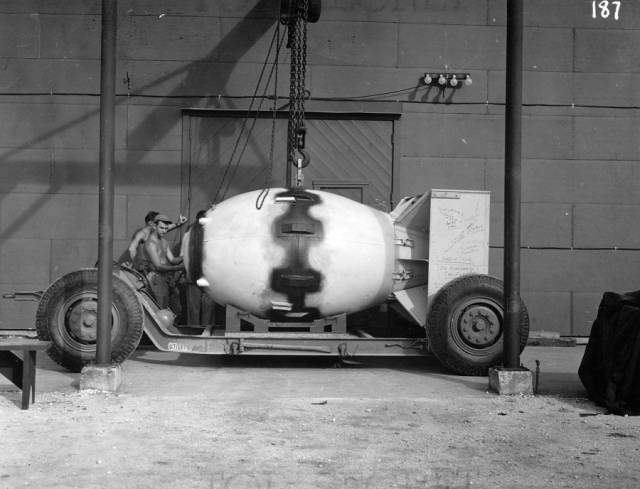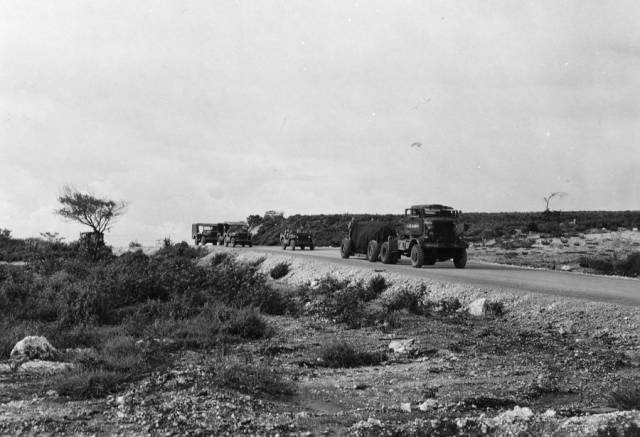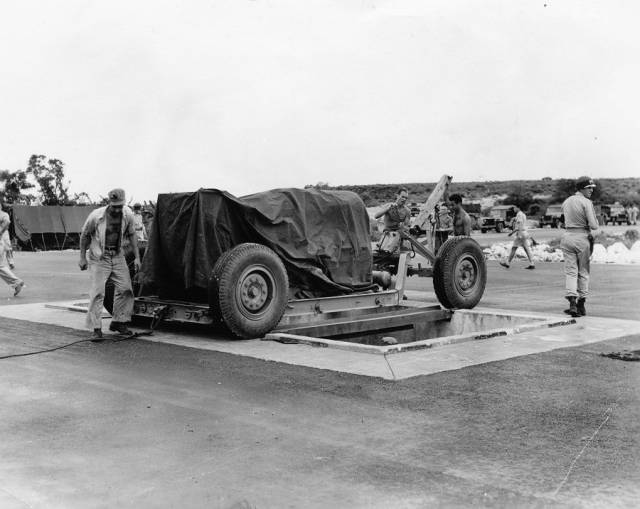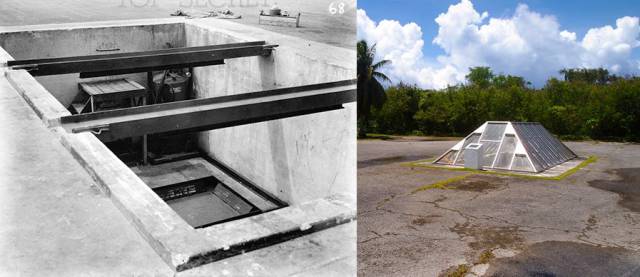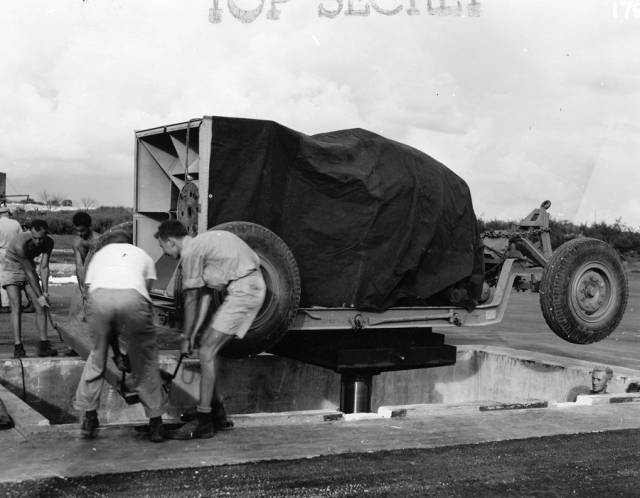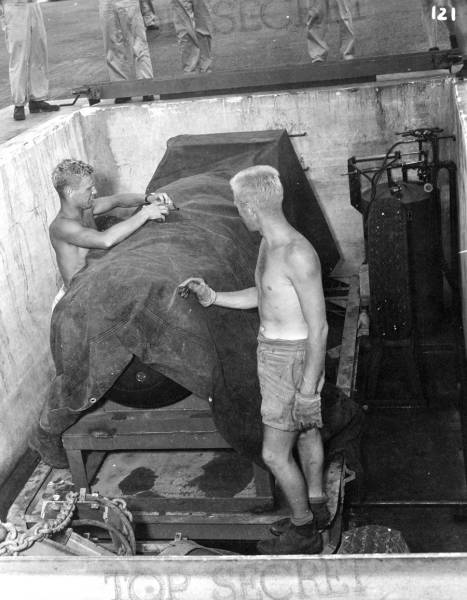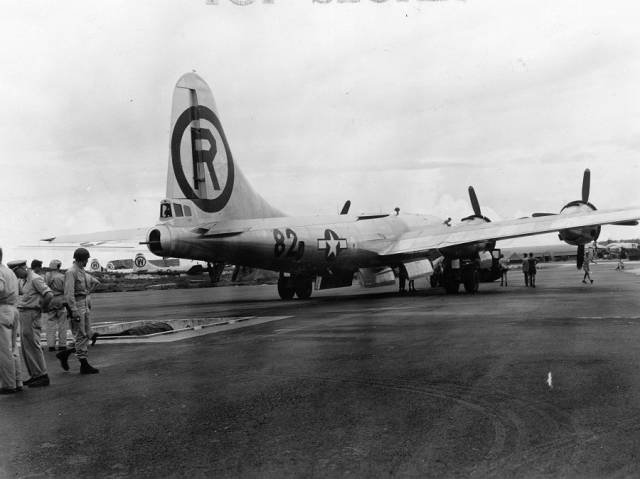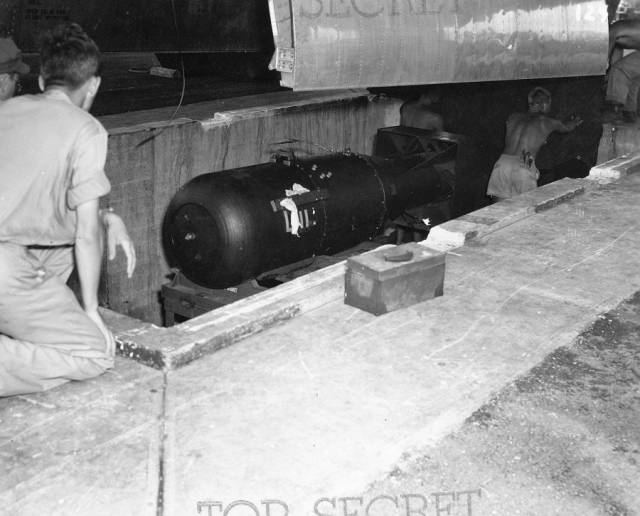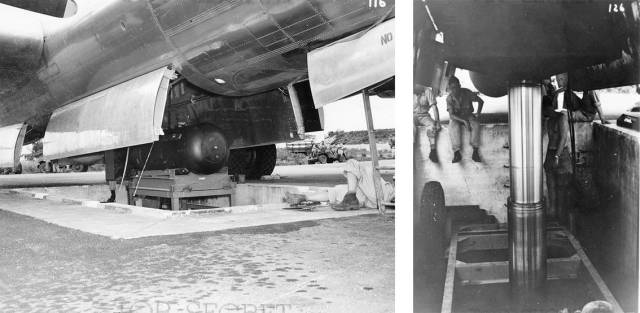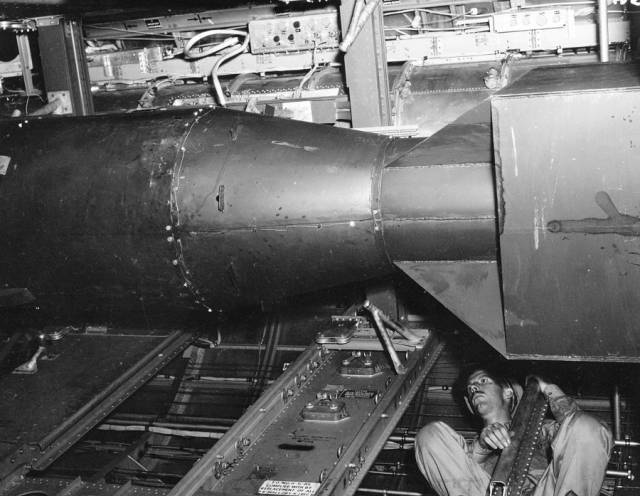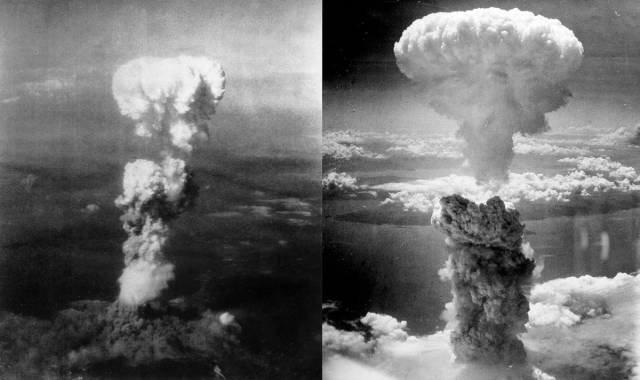- 1 Like
Declassified Photos Of The US’s Preparations For Atomic Bombings Of Japan (16 pics + 1 video)
Interesting photos that show the US’s final preparations of "Fat Man" and “Little Boy” which were codenames for atomic bombs that were detonated over the Japanese cities of Nagasaki and Hiroshima in August of 1945.
Soldiers check the casings on the "Fat Man" atomic bomb. Multiple test bombs were created on Tinian Island. All were roughly identical to an operational bomb, even though they lacked the necessary equipment to detonate.
On the left, geophysicist and Manhattan Project participant Francis Birch marks the bomb unit that would become "Little Boy" while Norman Ramsey, who would later win the Nobel Prize in Physics, looks on.
A technician applies sealant and putty to the crevices of "Fat Man," a final preparation to make sure the environment inside the bomb would be stable enough to create a full impact once it detonated.
Soldiers and workers sign their names and other messages on the nose of "Fat Man."
Here's a closer look.
"Fat Man" is loaded onto a transport trailer and given a final once-over.
The bomb is then escorted to the nearby North Field airbase on Tinian, shrouded in tarp.
At the airfield, "Fat Man" is lined up over a pit specifically constructed for it, from which it is then loaded into the plane that eventually dropped it over Nagasaki.
Both pits for "Little Boy" and "Fat Man," each roughly 8 feet by 12 feet, still exist today on the island and now serve as a memorial of sorts.
The bomb and its trailer are lowered down into the pit using a hydraulic lift.
Workers check "Little Boy" one last time, keeping the tarp on for security reasons, following a similar lowering procedure like the one done for "Fat Man" three days later.
Once "Little Boy" is ready, the Enola Gay, a Boeing B-29 Superfortress bomber, is reversed and positioned over the trench.
The tarp is removed and the bomb is readied for loading.
Using the hydraulic lift, "Little Boy" is carefully raised and loaded into the belly of the Enola Gay.
Once inside the plane, the bomb is secured and all connections and equipment are checked again.
From there, both "Little Boy" and "Fat Man" were flown over Hiroshima and Nagasaki, respectively, and detonated. World War II ended shortly afterwards.
Left: Atomic bombing of Hiroshima on August 6, 1945. Right: Atomic bombing of Nagasaki on August 9, 1945, taken by Charles LevyAP
Tags
Archives
- September 2023 (122 entries)
- August 2023 (160 entries)
- July 2023 (152 entries)
- June 2023 (152 entries)
- May 2023 (159 entries)
- April 2023 (147 entries)
- March 2023 (158 entries)
- February 2023 (142 entries)
- January 2023 (140 entries)

